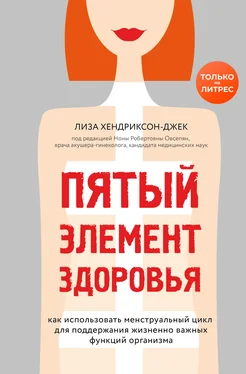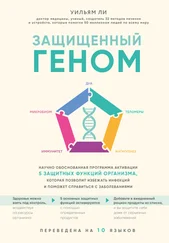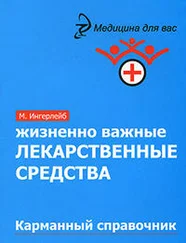66. Hendrickson-Jack, Lisa. “FFP 141 | Surviving Hypothalamic Amenorrhea | Getting Your Period Back Without Fertility Drugs | Nicola Rinaldi.” Fertility Friday Podcast. Podcast Audio, June 9, 2017. fertilityfriday.com/141
1. Price, Weston A. (2016). Nutrition and Physical Degeneration, 8th edition. Lemon Grove, CA: Price-Pottenger Nutrition Foundation, 124–125.
2. Clagett-Dame, Margaret, and Danielle Knutson. “Vitamin A in reproduction and development.” Nutrients 3, no. 4 (2011): 385–428; Emmett, Susan D., and Keith P. West Jr. “Gestational vitamin A deficiency: a novel cause of sensorineural hearing loss in the developing world?” Medical Hypotheses 82, no. 1 (2014): 6–10; Strobel, Manuela, Jana Tinz, and Hans-Konrad Biesalski. “The importance of β-carotene as a source of vitamin A with special regard to pregnant and breastfeeding women.” European Journal of Nutrition 46, no. 9 (2007): 1–20.
3. Strobel, Manuela, Jana Tinz, and Hans-Konrad Biesalski. “The importance of β-carotene as a source of vitamin A with special regard to pregnant and breastfeeding women.” European Journal of Nutrition 46, no. 9 (2007): 1–20.
4. Breymann, Christian. “Iron deficiency anemia in pregnancy.” Seminars in Hematology 52, no. 4 (2015): 339–347; McArdle, Harry J., Lorraine Gambling, and Christine Kennedy. “Iron deficiency during pregnancy: the consequences for placental function and fetal outcome.” Proceedings of the Nutrition Society 73, no. 1 (2014): 9–15.
5. Alwan, Nisreen A., Janet E. Cade, Harry J. McArdle, Darren C. Greenwood, Helen E. Hayes, and Nigel A.B. Simpson. “Maternal iron status in early pregnancy and birth outcomes: insights from the baby’s vascular health and iron in pregnancy study.” British Journal of Nutrition 113, no. 12 (2015): 1985–1992.
6. Zeisel, Steven H. “Nutrition in pregnancy: the argument for including a source of choline.” International Journal of Women’s Health 5 (2013): 193–199; Shaw, Gary M., Suzan L. Carmichael, Wei Yang, Steve Selvin, and Donna M. Schaffer. “Periconceptional dietary intake of choline and betaine and neural tube defects in offspring.” American Journal of Epidemiology 160, no. 2 (2004): 102–109; Meck, Warren H., Rebecca A. Smith, and Christina L. Williams. “Pre– and postnatal choline supplementation produces long-term facilitation of spatial memory.” Developmental Psychobiology 21, no. 4 (1988): 339–353; Gaskins, Audrey J., Sunni L. Mumford, Jorge E. Chavarro, Cuilin Zhang, Anna Z. Pollack, Jean Wactawski-Wende, Neil J. Perkins, and Enrique F. Schisterman. “The impact of dietary folate intake on reproductive function in premenopausal women: a prospective cohort study.” PLOS One 7, no. 9 (2012): e46276; Zeisel, Steven H. “The fetal origins of memory: the role of dietary choline in optimal brain development.” The Journal of Pediatrics 149, no. 5 (2006): S131–S136; Zeisel, Steven H. “Choline: needed for normal development of memory.” Journal of the American College of Nutrition 19, no. sup5 (2000): 528S–531S; Bibbins-Domingo, Kirsten, David C. Grossman, Susan J. Curry, Karina W. Davidson, John W. Epling, Francisco A.R. García, Alex R. Kemper et al. “Folic acid supplementation for the prevention of neural tube defects: US Preventive Services Task Force recommendation statement.” JAMA 317, no. 2 (2017): 183–189.
7. Lee, Joyce M., Jessica R. Smith, Barbara L. Philipp, Tai C. Chen, Jeffrey Mathieu, and Michael F. Holick. “Vitamin D deficiency in a healthy group of mothers and newborn infants.” Clinical Pediatrics 46, no. 1 (2007): 42–44.
8. Mahon, Pamela, Nicholas Harvey, Sarah Crozier, Hazel Inskip, Sian Robinson, Nigel Arden, Rama Swaminathan, Cyrus Cooper, and Keith Godfrey. “Low maternal vitamin D status and fetal bone development: cohort study.” Journal of Bone and Mineral Research 25, no. 1 (2010): 14–19; Wei, S.Q., F. Audibert, N. Hidiroglou, K. Sarafin, P. Julien, Y. Wu, Z.C. Luo, and W.D. Fraser. “Longitudinal vitamin D status in pregnancy and the risk of pre-eclampsia.” BJOG: An International Journal of Obstetrics & Gynaecology 119, no. 7 (2012): 832–839; Mulligan, Megan L., Shaili K. Felton, Amy E. Riek, and Carlos Bernal-Mizrachi. “Implications of vitamin D deficiency in pregnancy and lactation.” American Journal of Obstetrics and Gynecology 202, no. 5 (2010): 429-e1–429-e9.
9. Mumford, Sunni L., Rebecca A. Garbose, Keewan Kim, Kerri Kissell, Daniel L. Kuhr, Ukpebo R. Omosigho, Neil J. Perkins et al. “Association of preconception serum 25-hydroxyvitamin D concentrations with live birth and pregnancy loss: a prospective cohort study.” The Lancet Diabetes & Endocrinology (2018): 1–8; Ota, Kuniaki, Svetlana Dambaeva, Ae-Ra Han, Kenneth Beaman, Alice Gilman-Sachs, and Joanne Kwak-Kim. “Vitamin D deficiency may be a risk factor for recurrent pregnancy losses by increasing cellular immunity and autoimmunity.” Human Reproduction 29, no. 2 (2013): 208–219.
10. Yu, C.K.H., L. Sykes, M. Sethi, T.G. Teoh, and S. Robinson. “Vitamin D deficiency and supplementation during pregnancy.” Clinical Endocrinology 70, no. 5 (2009): 685–690.
11. Innis, Sheila M. “Dietary omega 3 fatty acids and the developing brain.” Brain Research 1237 (2008): 35–43; Coletta, Jaclyn M., Stacey J. Bell, and Ashley S. Roman. “Omega-3 fatty acids and pregnancy.” Reviews in Obstetrics & Gynecology 3, no. 4 (2010): 163–171; Helland, Ingrid B., Lars Smith, Kristin Saarem, Ola D. Saugstad, and Christian A. Drevon. “Maternal supplementation with very-long-chain n-3 fatty acids during pregnancy and lactation augments children’s IQ at 4 years of age.” Pediatrics 111, no. 1 (2003): e39–e44; Greenberg, James A., Stacey J. Bell, and Wendy Van Ausdal. “Omega-3 fatty acid supplementation during pregnancy.” Reviews in Obstetrics & Gynecology 1, no. 4 (2008): 162–169.
12. Dillon, J.C., and J. Milliez. “Reproductive failure in women living in iodine deficient areas of West Africa.” BJOG: An International Journal of Obstetrics & Gynaecology 107, no. 5 (2000): 631–636.
13. Mills, J.L., G.M. Buck Louis, K. Kannan, J. Weck, Y. Wan, J. Maisog, A. Giannakou, Q. Wu, and R. Sundaram. “Delayed conception in women with low-urinary iodine concentrations: a population-based prospective cohort study.” Human Reproduction (2018): 426–433.
14. Delange, François. “Iodine requirements during pregnancy, lactation and the neonatal period and indicators of optimal iodine nutrition.” Public Health Nutrition 10, no. 12A (2007): 1571–1580; Niwattisaiwong, Soamsiri, Kenneth D. Burman, and Melissa Li-Ng. “Iodine deficiency: clinical implications.” Cleveland Clinic Journal of Medicine 84, no. 3 (2017): 236–244.
15. Vermiglio, F., V. P. Lo Presti, M. Moleti, M. Sidoti, G. Tortorella, G. Scaffidi, M.G. Castagna et al. “Attention deficit and hyperactivity disorders in the offspring of mothers exposed to mild-moderate iodine deficiency: a possible novel iodine deficiency disorder in developed countries.” The Journal of Clinical Endocrinology & Metabolism 89, no. 12 (2004): 6054–6060; Halpern, Jean-Pierre, Steven C. Boyages, Glenden F. Maberly, John K. Collins, Creswell J. Eastman, and John G.L. Morris. “The neurology of endemic cretinism: a study of two endemias.” Brain 114, no. 2 (1991): 825–841; Pharoah, P.O.D., I.H. Buttfield, and B.S. Hetzel. “Neurological damage to the fetus resulting from severe iodine deficiency during pregnancy.” International Journal of Epidemiology 41, no. 3 (2012): 589–592; Hynes, Kristen L., Petr Otahal, Ian Hay, and John R. Burgess. “Mild iodine deficiency during pregnancy is associated with reduced educational outcomes in the offspring: 9-year follow-up of the gestational iodine cohort.” The Journal of Clinical Endocrinology & Metabolism 98, no. 5 (2013): 1954–1962; Delange, F. “Iodine deficiency as a cause of brain damage.” Postgraduate Medical Journal 77, no. 906 (2001): 217–220.
Читать дальше
Конец ознакомительного отрывка
Купить книгу












